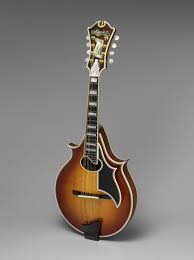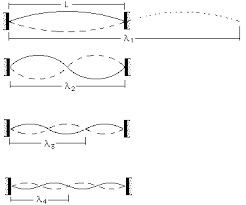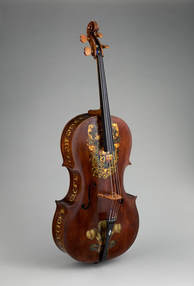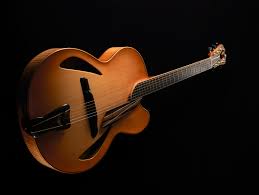String Instruments
What are they?
String instruments use strings to create sound. There are many types of string instruments from pianos to guitars, and they are played in several different ways including plucking, bowing, and the string being struck with a small hammer.
|
How do they work?
"Stringed instruments create the sound in three phases: (i) the source or string, (ii) the medium or body and (iii) the interface, which is the oscillation of the air around the body. " All string instruments use the tension of a string in order to create a sound through the oscillation of the string. Oscillation is a repeated vibrations. This is why tuning string instruments is important: if the string does not have the right amount of tension, then the right note won't be heard. Strings can also change sound depending on the thickness and how the string is played (whether that be plucking, bowing, or another way of playing the instrument). The pressure and force with which the string is played will change the amplitude of the sound waves and change the volume heard. The vibration of the string causes the body of the instrument to also vibrate. The material and size of the instrument also matters. For example, larger instruments make lower sounds, and smaller instruments make higher sounds. Finally, the air around the instrument, and how it interacts with the oscillation of the string can change the sound of the instrument.
|
Mandolin (Photo Credit)
This image shows how the oscillation of a string works (Photo Credit)
|
|
Pianos
Pianos have one of the more complicated mechanisms for string instruments. In order to play sound, one must strike a key that causes a small hammer to strike a string that corresponds to the note that the key represents. The hammer has to hit the string with the right velocity in order to make the string vibrate enough to make a sound. The body of the piano projects the sound so it can be heard over a large distance. Pianos are very useful instruments because they have a large number of keys that mean that many octaves can be played, and both the melody of a piece as well as the harmony can be played by one person. Pianos have evolved over time, and more recent pianos cause vibrations that can disrupt the floor, so often runner is used in the feet of the piano so this causes less of a disruption (5).
|
|
Violins, Violas, Cellos & Bases
Violins have four strings that are stretched from the scroll to the tailpiece. Violin's strings are used in order to create vibrations at certain frequencies, and their body is used to project the sound. The tension of the strings in violins are very important, because the string has to be tuned to a specific frequency in order for all the other notes to also be correct. In order to change notes, people place their fingers on different places near the scroll (where the tuning pegs are) on the fingerboard to shorten or lengthen the string and create higher or lower notes (5). To create a vibration the string is either plucked or bowed above the body of the violin, which causes the string to vibrate. This same mechanism is used not just for violins, but also for violas, cellos, and bases.
|
|
Guitars
Guitars use a very similar mechanism to violins, however they have six strings instead of four. The frequencies of the sound that guitars make is also changed by the length of the string, which can be changed with fingers, or a capo (which changes the length of all the strings and makes the pitch of all the strings). The body of the guitar also projects the sound, and they vibration of the strings can either be created by strumming the strings or plucking/picking them.
|




